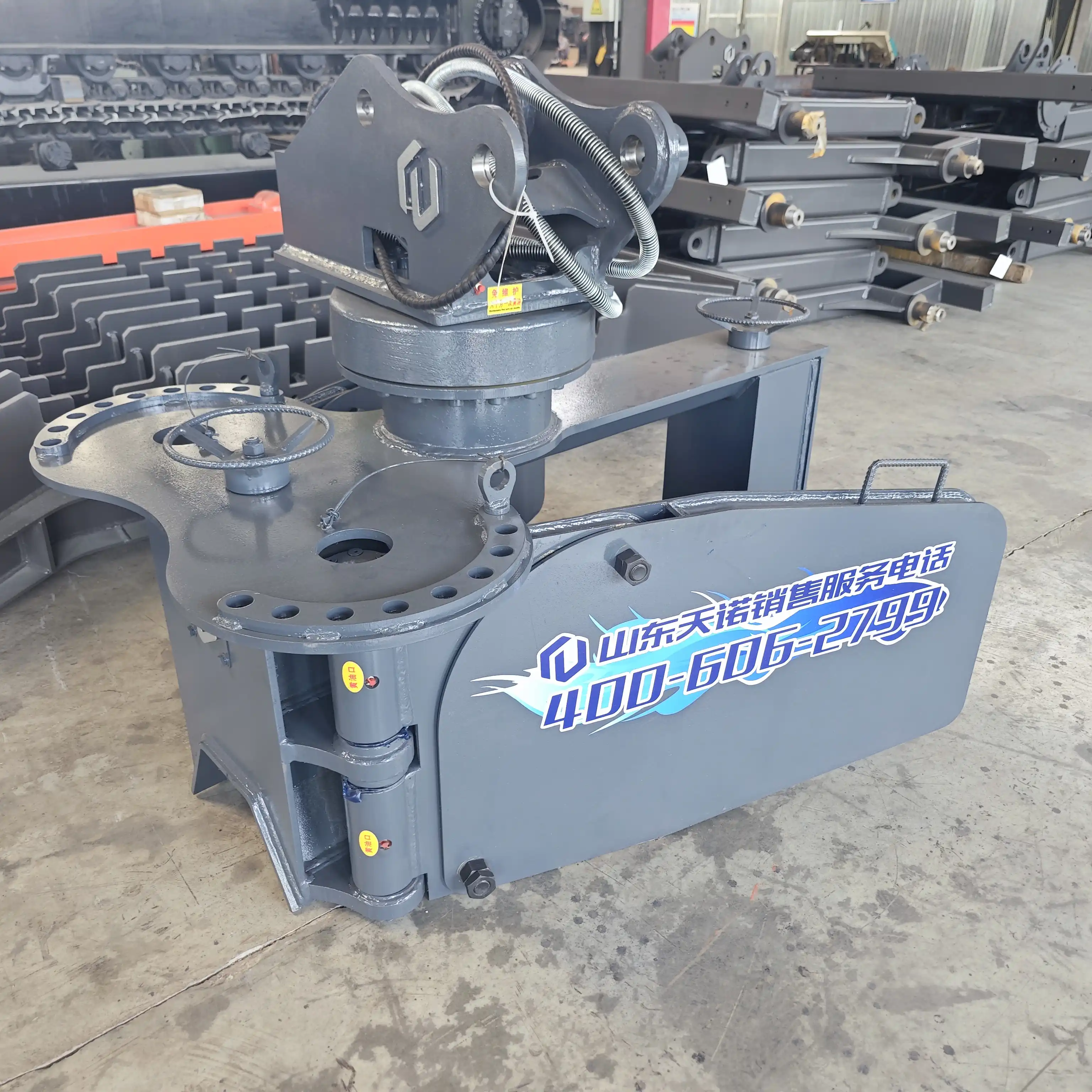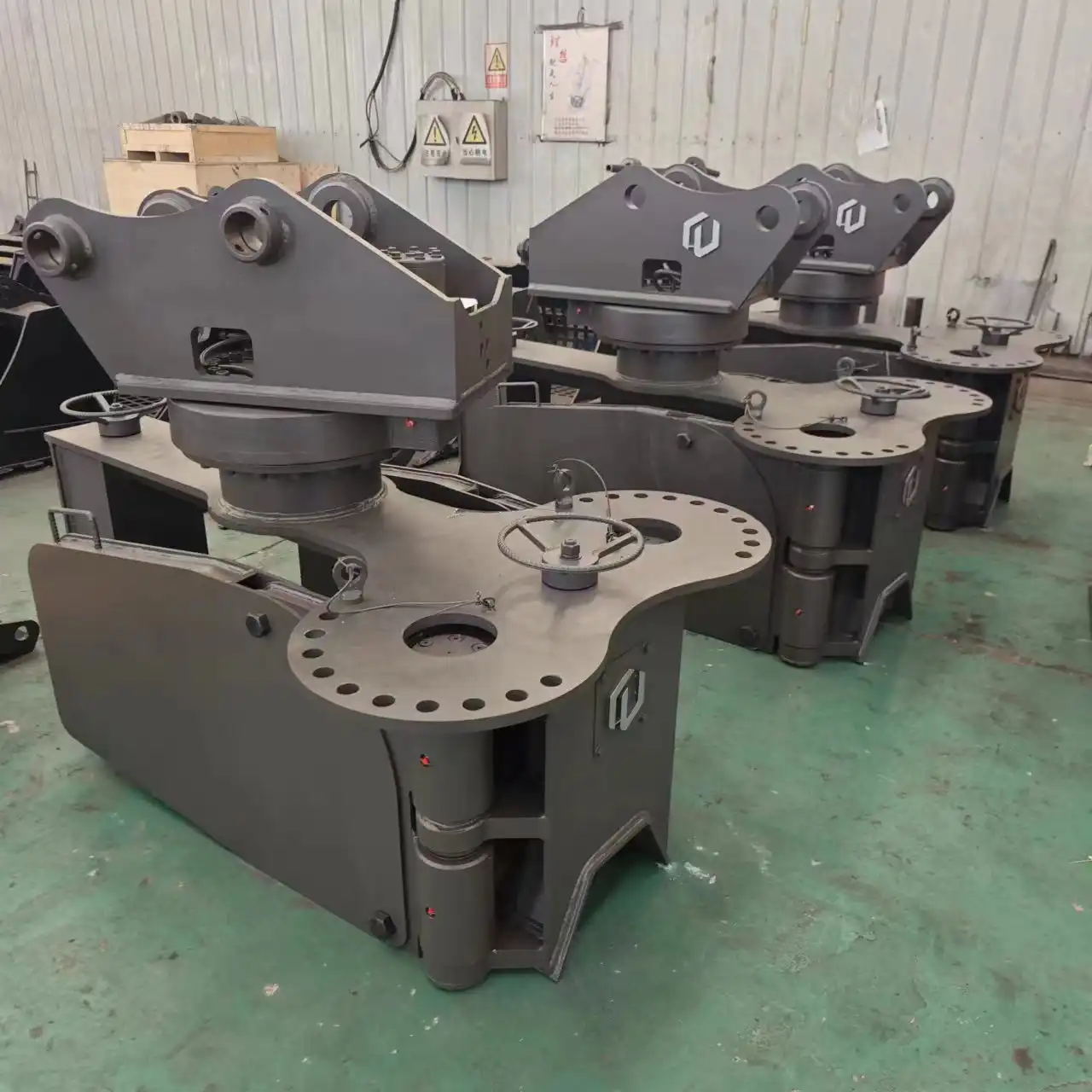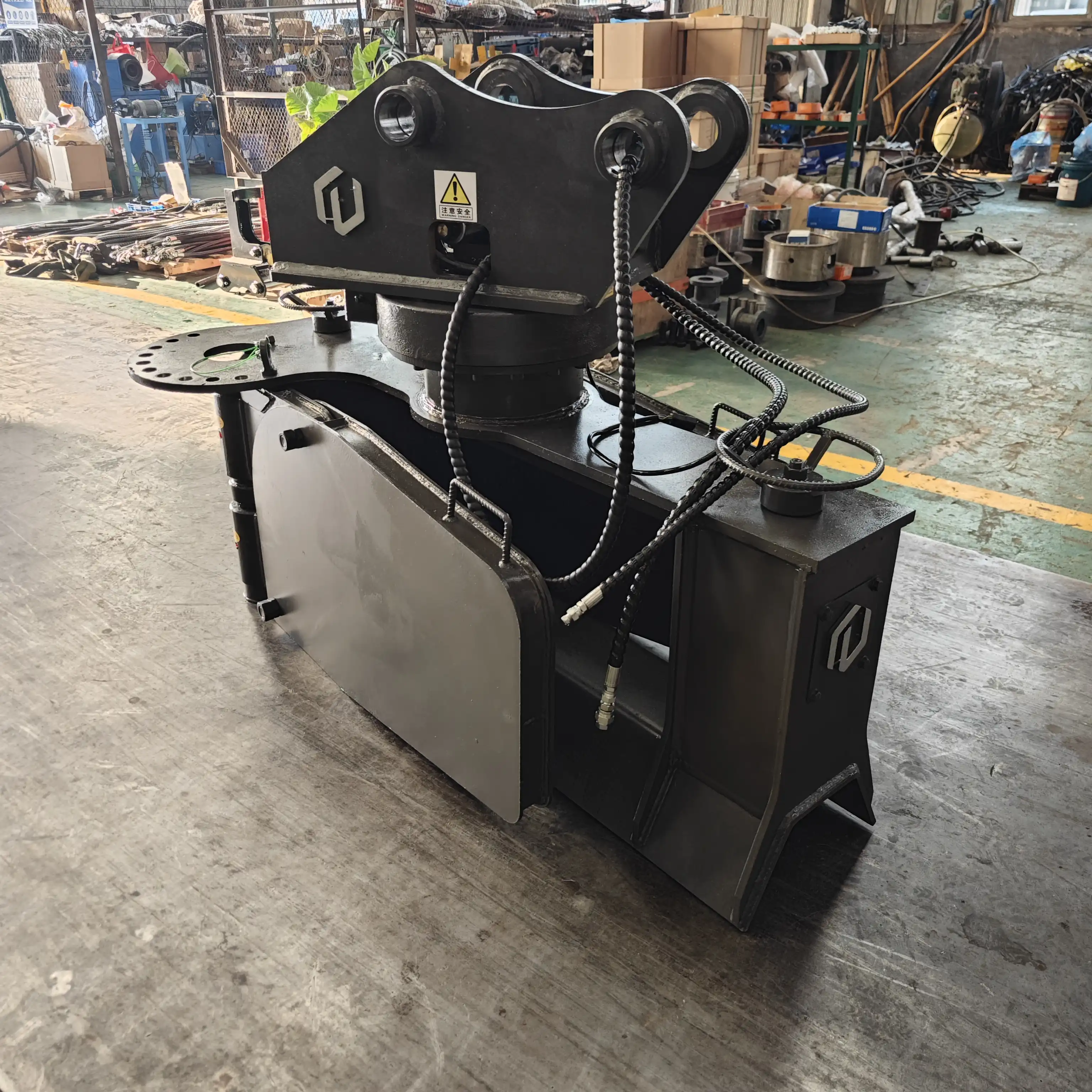What is ballast in railway track?
Railway ballast is the crushed stone foundation layer upon which railroad tracks are positioned, serving as the critical bedrock of modern rail infrastructure. This coarse, angular aggregate material, typically granite, limestone, or basalt, forms the fundamental support structure that distributes train loads, facilitates drainage, and maintains track alignment through countless service cycles. When keeping these essential components of rail systems, specialized equipment like the railway excavator ballast plow becomes indispensable for railway operators. These purpose-built attachments mount onto standard excavators, transforming them into precision instruments capable of efficiently redistributing, shaping, and profiling ballast material alongside and between railway tracks. The intricate relationship between quality ballast material and proper maintenance practices directly influences track longevity, operational safety, and life-cycle costs across passenger and freight networks worldwide, making ballast management a cornerstone of effective railway engineering and maintenance protocols.
Functions of Railway Ballast

Load Distribution and Track Stability
The foremost purpose of railway ballast is to distribute concentrated loads from passing trains across a wider area of the underlying subgrade. When heavy rail vehicles traverse the tracks, they generate immense vertical, lateral, and longitudinal forces that would deform and damage the subgrade without proper distribution. Quality ballast creates a resilient foundation that absorbs and dissipates these multi-directional stresses while maintaining geometric track alignment. Ballast stones' angular, interlocking nature provides mechanical stability through particle interlock, preventing excessive track movement under dynamic loading conditions.
The ballast bed's ability to resist lateral and longitudinal track shift, known as creep resistance, directly influences operational safety parameters. Insufficient lateral resistance can lead to track buckling during temperature fluctuations, while inadequate longitudinal resistance affects braking distances and acceleration capabilities. After maintenance operations with equipment like the railway excavator ballast plow, proper consolidation of the ballast bed restores these resistive properties. Modern ballast designs incorporate specific gradation profiles that optimize both load distribution characteristics and resistance to displacement, balancing seemingly contradictory requirements through precisely engineered particle size distributions and material selection.
Drainage Facilitation
Railway ballast serves as an engineered drainage system that rapidly channels water away from track structures. The void spaces between individual ballast particles create interconnected drainage pathways that prevent water accumulation around rails and sleepers. This drainage functionality protects tracks from two primary water-related threats: subgrade softening and frost heave. When water saturates the subgrade beneath tracks, it reduces load-bearing capacity and accelerates track settlement. In colder climates, trapped water can freeze and expand, distorting track geometry through frost heave mechanisms.
Beyond protection from moisture damage, effective ballast drainage significantly extends component lifespan throughout the track structure. Timber sleepers remain vulnerable to rot when exposed to prolonged moisture, while metal components face accelerated corrosion in wet environments. Even concrete sleepers experience degradation through freeze-thaw cycles in water-saturated conditions. Specialized maintenance equipment like the railway excavator ballast plow helps restore proper ballast profiles after fouling has reduced drainage capacity, reinstating the ballast's hydrological functions. Engineers carefully balance ballast gradation between particles large enough to maintain adequate void spaces and sufficient smaller particles to provide stability.
Layers and Placement

Ballast Gradation and Material Requirements
Railway ballast specifications include precise gradation requirements that determine performance characteristics in field applications. Standard ballast typically ranges from 28mm to 50mm in particle size, creating void spaces large enough for drainage while maintaining structural integrity. Quality ballast material must demonstrate exceptional resistance to crushing, abrasion, weathering, and chemical deterioration through standardized testing protocols. Material hardness, often measured using Los Angeles abrasion testing, predicts how particles will withstand the crushing forces exerted during track tamping operations and train passages. Flakiness and elongation indices limit the percentage of irregularly shaped particles that could reduce interlocking effectiveness or break under load.
The angular shape of ballast particles proves particularly critical for track stability, with crushed stone providing superior interlock compared to naturally rounded gravels. Geologic source selection significantly influences ballast performance, with igneous rocks like granite and basalt generally offering superior durability compared to sedimentary alternatives. Material cleanliness standards limit the presence of fine particles that could impede drainage functions over time. When maintaining ballast profiles with equipment like the railway excavator ballast plow, operators must take care to preserve these carefully engineered material characteristics while restoring proper cross-sectional geometry and removing contamination that reduces void space.
Structural Profile and Cross-Sections
Railway ballast follows specific structural profiles designed to optimize performance across multiple parameters. The ballast section typically extends beyond the track width, creating shoulders that provide lateral support against track movement. Standard ballast depths range from 200mm to 300mm beneath sleepers, with variations based on traffic volume, axle loads, and subgrade conditions. This depth ensures adequate load distribution while providing sufficient material for maintenance activities like tamping and profiling. Cross-sectional designs incorporate precisely calculated slopes that balance drainage requirements against material stability considerations.
Proper ballast profiles facilitate maintenance operations while extending service intervals between major rehabilitation work. When using equipment like the railway excavator ballast plow, operators restore these engineered profiles that may have degraded through ballast migration or settlement. The crown profile between tracks promotes water shedding toward side ditches, while shoulder slopes prevent material migration away from the track structure. Modern high-speed railways often implement precisely engineered ballast profiles with tightly controlled tolerances to maintain the exacting geometric requirements of faster operations. Advanced track design incorporates ballast measurement systems that continuously monitor profile conditions, allowing for data-driven maintenance scheduling before geometric parameters exceed allowable tolerances.
Maintenance and Challenges

Ballast Degradation and Fouling
Despite its robust construction, railway ballast gradually deteriorates through several mechanisms that reduce its effectiveness over time. Mechanical degradation occurs as individual particles fracture under repeated loading cycles, generating smaller fragments that fill void spaces between larger stones. This particle breakdown accelerates in curves and grade transition areas where dynamic forces intensify. External contamination from sources like coal dust, spilled cargo, and subgrade infiltration further contributes to void space reduction. When voids become sufficiently filled, typically at 30-40% contamination by volume, the ballast reaches a fouled condition requiring intervention to restore functionality.
Fouled ballast exhibits dramatically reduced drainage capacity, diminished load distribution capabilities, and compromised resistance to track movement. The progression from clean to moderately fouled to heavily fouled ballast represents the natural life cycle of track materials under operational conditions. Regular maintenance using equipment like the railway excavator ballast plow can extend the functional lifespan by redistributing cleaner material and removing surface contamination before it penetrates deeper layers. Advanced deterioration eventually necessitates more intensive interventions like ballast cleaning or complete replacement to restore engineering properties. Monitoring techniques, including ground-penetrating radar and ballast sampling,g help maintenance planners identify fouling conditions before they compromise track performance.
Maintenance Methods and Equipment
Railway operators employ various maintenance strategies to extend ballast life and restore functionality throughout the service cycle. Tamping operations realign tracks while simultaneously reconsolidating ballast beneath sleepers, addressing localized settlement issues before they affect ride quality. Ballast regulators restore proper cross-sectional profiles after tamping displaces material from beneath the track. For more extensive restoration of ballast profiles between scheduled major maintenance cycles, specialized attachments like the railway excavator ballast plow provide flexible, cost-effective solutions for smaller-scale operations or areas with limited access.
When fouling reaches advanced stages, ballast cleaning machines excavate, screen, and return cleaned material to the track structure, removing accumulated fines that compromise drainage and stability. This undercutting process renews ballast properties without complete replacement, representing a sustainable approach to material management. Complete ballast replacement becomes necessary when degradation progresses beyond the point where cleaning remains economically viable. Modern maintenance planning utilizes condition-based approaches rather than fixed time intervals, optimizing resource allocation while minimizing traffic disruptions. Equipment selection balances maintenance effectiveness against operational constraints like track possession times and access limitations.
FAQ
①What is the ideal depth of ballast beneath railway tracks?
Standard ballast depth typically ranges from 200mm to 300mm (8-12 inches) beneath sleepers, though specific requirements vary based on factors including axle loads, train speed, sleeper type, and subgrade conditions. High-speed railways and heavy haul lines often utilize greater depths to enhance load distribution and extend maintenance cycles.
②How often does railway ballast need to be replaced?
Ballast replacement intervals vary significantly based on traffic volume, axle loads, environmental conditions, and maintenance practices. Typical lifespans range from 15-30 years before complete replacement, though regular maintenance with equipment like ballast plows can extend usable life. Heavy haul operations may require more frequent intervention, while passenger lines with lighter axle loads often achieve longer service intervals.
③What causes ballast fouling in railway tracks?
Ballast fouling results from multiple mechanisms, including mechanical breakdown of ballast particles under load, infiltration of fine materials from the subgrade below, contamination from above (coal dust, cargo spillage, windblown sediment), decomposition of organic matter, and wear debris from track components. Traffic volume, axle loads, drainage conditions, and ballast material quality all influence fouling rates.
Learn About Tiannuo

The challenges of ballast degradation and fouling necessitate ongoing maintenance interventions using specialized equipment suited to specific operational contexts. From major ballast cleaning operations to targeted profile restoration using tools like the ballast plow, maintenance strategies must balance immediate operational needs against long-term infrastructure sustainability goals. As railway systems continue evolving to meet increasing capacity demands and environmental expectations, ballast technology and maintenance approaches will similarly advance through continued innovation and practical field experience.
Tiannuo Construction Machinery Co., Ltd specializes in manufacturing high-quality railway maintenance equipment, including advanced ballast plows designed for optimal performance across diverse railway applications. Our railway excavator ballast plows are engineered for durability and precision, offering adjustable working angles and 360° rotation capabilities that enhance versatility in confined railway environments. Compatible with 7-15 ton excavators, these attachments provide cost-effective solutions for ballast profiling, redistribution, and maintenance operations essential to railway track integrity. For more information about our railway maintenance equipment or to discuss your specific project requirements, please contact us at rich@stnd-machinery.com.
References
Wilson, J.R. (2023). Railway Track Engineering: Design, Construction, and Maintenance Principles. Modern Railway Systems Journal, 42(3), 187-205.
Thompson, D.B., & Richards, K.L. (2024). Ballast Degradation Mechanisms in Heavy Haul Railway Operations. International Journal of Railway Technology, 13(2), 72-89.
Martinez, A., & Johnson, P. (2023). Advanced Maintenance Techniques for Railway Track Components. Railway Engineering Review, 31(4), 215-233.
Patel, S., & Henderson, M. (2024). Performance Evaluation of Railway Ballast Materials Under Cyclic Loading. Journal of Transportation Infrastructure, 17(1), 55-70.
Zhang, L., & Williams, T. (2023). Innovations in Railway Maintenance Equipment: Applications and Effectiveness. Railway Maintenance Technology, 28(2), 101-118.
About Author: Arm
Arm is a leading expert in the field of specialized construction and railway maintenance equipment, working at Tiannuo Company.

